Hed Jet Plus review
As promised, we’re keeping the summer rolling with race wheel reviews. Who doesn’t like race wheels? I sure do. They make me look a whole lot faster than I am, which is a big plus. The folks at Hed Cycling were happy to accommodate my vanity, and sent a Plus of their own – some unabashedly rotund Jet Plus wheels.
What does Plus mean? It means that the key Jet products got even wider for 2014, following the trend set by the Ardennes. The ‘old’ rims measured 23mm wide at the braking surfaces, which was considered both groundbreaking and strange upon its introduction in 2007… and then (most of) the rest of the industry followed along in the coming years. Now 23’s are widely considered to be the norm. Mind you, I’m not commenting on the performance claims/benefits/detriments – yet – just stating the current lay of the land. We also discussed this situation extensively in our 2014 Rim Width Update.
The new Plus rims measure 25.0mm at the braking surfaces. That’s wider than most mountain bike rims were only a decade ago. The inner width between the bead hooks measures 20.6mm – wide enough to fit old-school road rims inside. Having ridden many miles on the Ardennes+, this editor really likes them. In fact, they became my go-to ‘training’ wheels that kept finding their way back on my bike in-between other wheel reviews.
With that experience behind me, I was eager to try this beautiful trio of wheels:
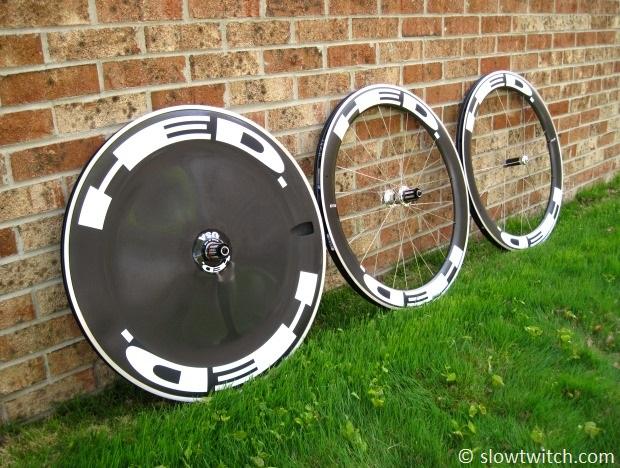
Above, you see a Jet 6+ pair along with a Jet+ disc. Until now, I had never ridden any Jet wheels, nor any rear disc with spoke construction. It was bound to be a learning experience, if nothing else. As usual, let’s start with the specs and numbers.
Hed Jet 6 Plus specifications:
MSRP: $1,900 USD
Weight: 1,734 grams/pair
Rim depth: 60mm
Rim width at brake track: 25.0mm
Rim internal width: 20.6mm
Spokes: 18 front, 24 rear Sapim CX-Ray with DT Prolock alloy nipples
Compatibility: Shimano/SRAM or Campagnolo 9-10-11 speed
Recommended tire width: 22mm+
Rider weight limit: 225lbs
Includes: titanium quick release skewers, rim tape, valve extenders, and cassette spacers
Also available in Stallion build with extra spokes (250 lb rider limit)
Also available with Powertap G3 hub
Hed Jet Plus disc specifications:
MSRP: $1,450
Weight: 1,210 grams
Rim width at brake track: 25.0mm
Rim internal width: 20.6mm
Compatibility: Shimano/SRAM or Campagnolo 9-10-11 speed
Recommended tire width: 22mm+
Rider weight limit: 225lbs
Includes titanium quick release skewer, tubeless rim tape, and cassette spacers
Also available in Stallion build with extra spokes (250 lb rider limit)
Also available with Powertap G3 hub
The wheels arrived neatly laid out in their boxes:
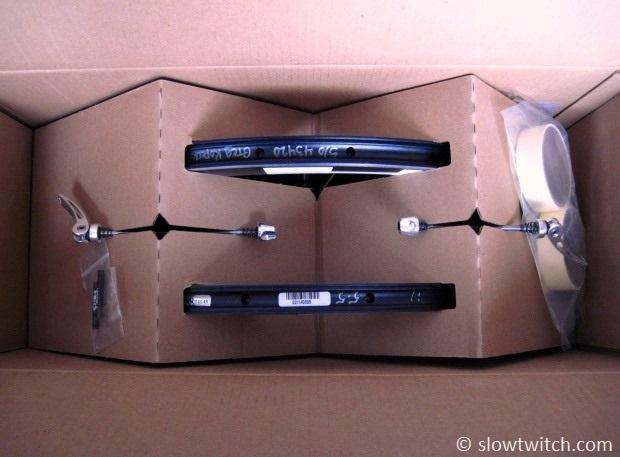
All of these wheels feature the same outer aluminum extrusion, shown in the photo below. Hed quoted a weight gain of 10-15 grams for the new Plus rim over the older 23mm C2 rim.
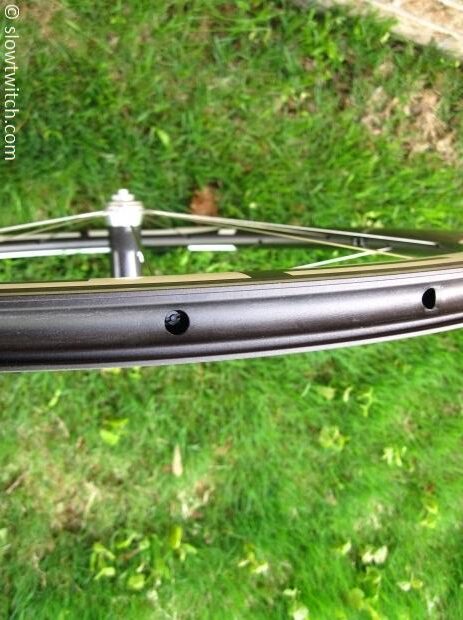
While Hed supplies tubeless-ready tape, the rims are not technically tubeless-ready. Tightening down a tubeless valve on the carbon fairing would cause it to crack, according to Hed.
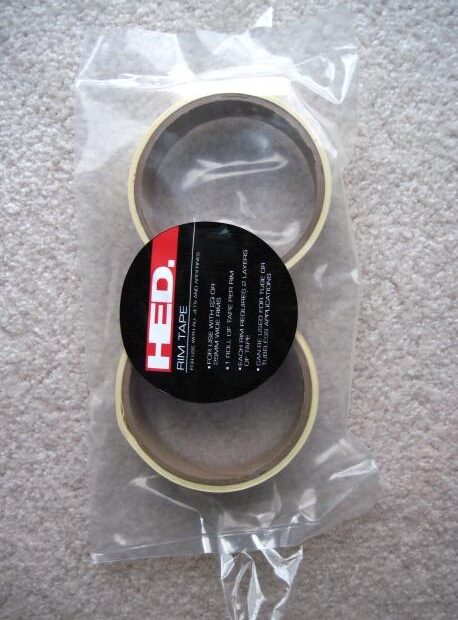
I have slowly gravitated to using this style of tape on most wheels – it’s thin, durable, and really stays in place. In case you’re wondering, the Hed tape seems to be very similar to Stan’s NoTubes tape.
Overall tire fit is just right with Plus rims; not too loose and not too tight. I have yet to find a tire that doesn’t fit well on them. As a non-standard example, I even used the Challenge Paris-Roubaix, a handmade cotton tire that can be a bear to mount on anything but old-school skinny tube-type rims. I was completely unable to mount it on a Shimano 700c disc brake wheel, but it worked on Hed’s Plus rim.
On the other side of the rim, you can see an ID that is even more blunt than the old 23mm Jets:
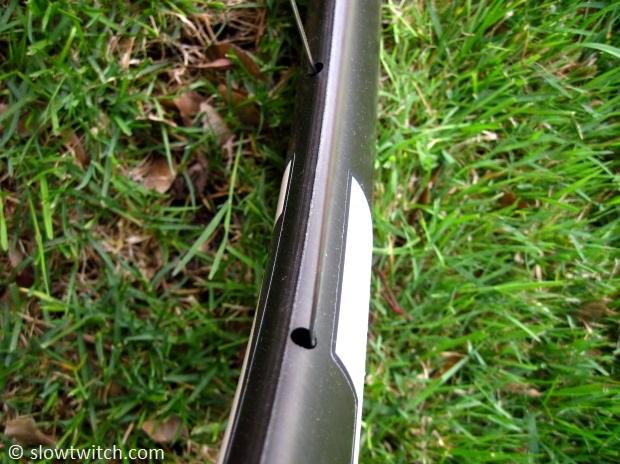
These are fairing-style rims – meaning that the aluminum rim and inner carbon section are two separate parts that get glued together in the production process. Put another way, it’s an aluminum wheel at heart, with a carbon fairing added for extra speed. Other brands with similar construction include many Mavic clinchers, Bontrager’s Aura 5, and the Flo 60/90.
Is that good or bad? Does it matter? In my experience, the ‘downside’ is that they don’t feel solid in your hand (you can flex the sides of the rim if you push on them). Now, I haven’t heard of this resulting in any compromise in durability; I only mention it for those who are not aware.
Note that fairing-style rims usually require a drain hole for water. With large holes for the spokes to go through, water can make its way inside. After bike washes, I made a habit of setting the wheels aside for 30 seconds with the drain holes facing down.
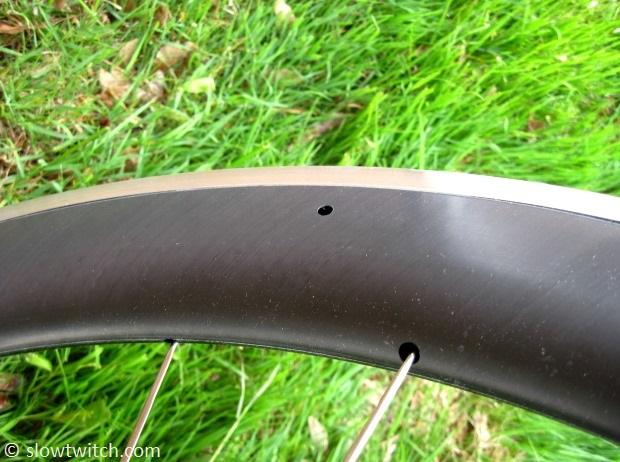
The hubs are Hed’s usual suspects – the Sonic front and rear. Jet Plus wheels use the top-end FR hubs with titanium ratchet ring and a rear grease port. These are not wimpy race-only hubs; they have substantial size bearings and will withstand a beating in poor weather.
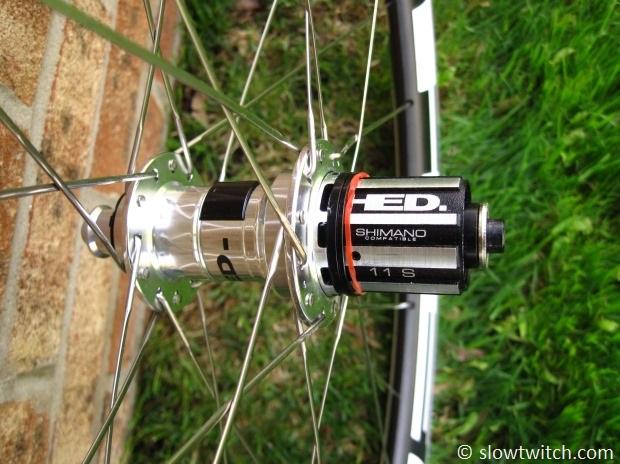
The non-Plus Jet 5 and 7 feature the same hub and spokes as the Ardennes LT, along with ‘skinny’ 23mm rims. The LT hub has the same bearings and other key internals as the FR, but with a less-flashy and slightly-heavier outside shell.
For those not familiar with Hed disc wheels, they feature aluminum rims with a bonded-on cover. See inside? That’s a spoke:
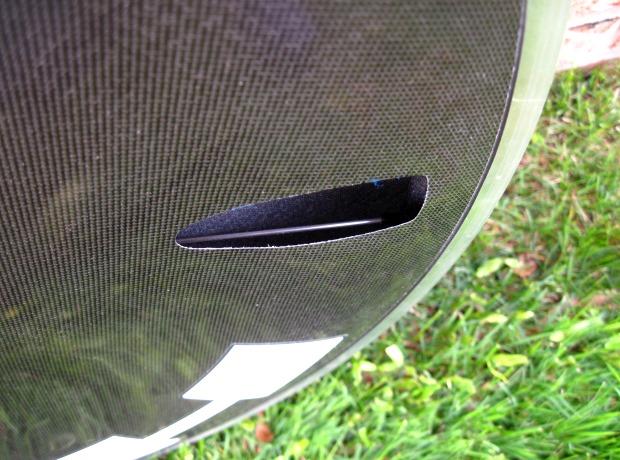
The outer area of the disc features a bulge, similar to the now-discontinued Zipp Sub-9, and Hed’s own Stinger disc. Unlike the Sub-9, however, the middle section of Hed’s disc feature a very wide lenticular shape:
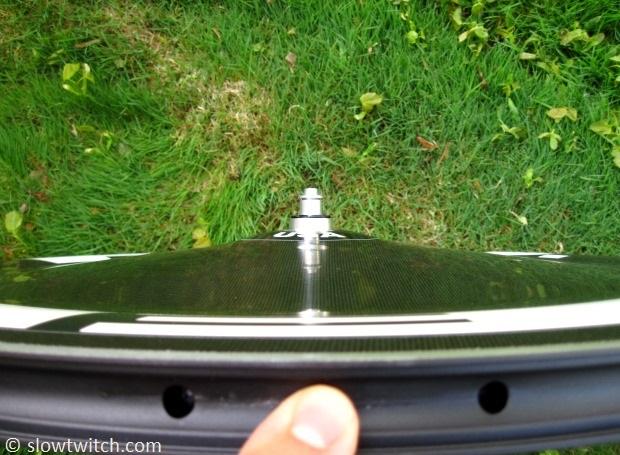
The non-drive side is very wide, while the drive side is constrained by the cassette.
This wheel-cover method of construction makes all Hed disc wheels compatible with Powertap hubs. All they must do is cut the center hole to accommodate the hub in need.
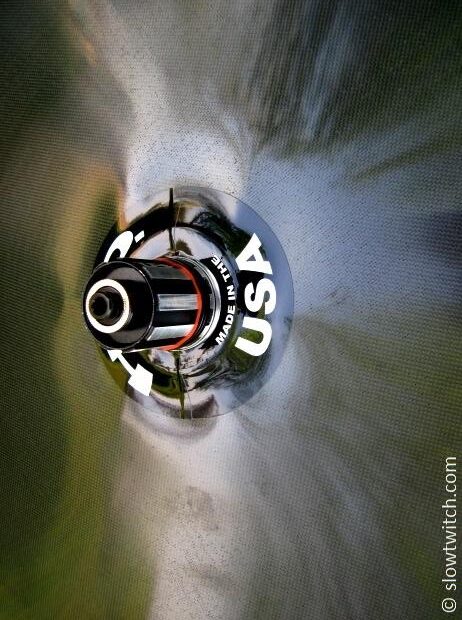
Hed representatives said that the spoke-style construction results in a wheel that’s quieter, more comfortable, and less costly than a structural disc.
Tire Size and Pressure
We talked about tire installation already, but it’s worth touching on the specifics of tire size and pressure with Hed’s new fat rims. The interesting thing about all clincher tires is that the effective size is hugely affected by the rim width (unlike glue-on tubular tires). A ‘23mm’ tire will measure very different on a 19mm rim and Hed’s 25mm rim. All advertised tire sizes are still based on old-style skinny rims.
The take-home for you is that the new Hed rims add 2-4mm to the actual size of the tire, compared to what is printed on the tire label. 23mm tires become – at least – 25’s. 25mm tires turn in to 28’s in an instant. Also note that tires grow in size over time.
I used Michelin’s Pro 4 Service Course Comp 700x23mm tire for this test. In my experience, this tire measures a true 23mm on skinny rims.
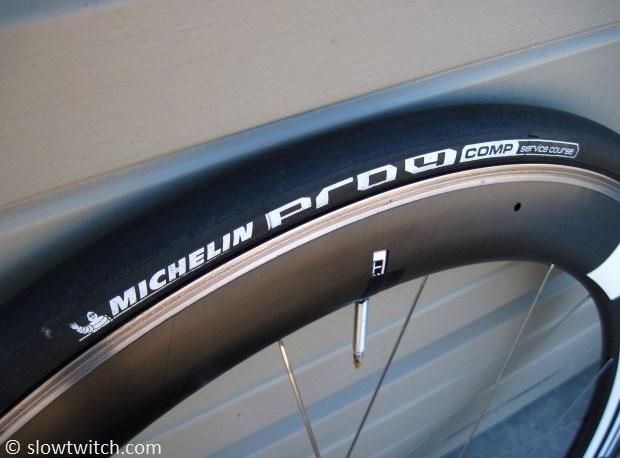
On the Jet Plus rims, my Michelins measured 25.0mm when brand new at 100psi, and a whopping 26.2mm after a few weeks. My experience with tire pressure lines up with Hed’s recommendations: You must lower it more than you think you should. The stated max from Hed is 110psi for tires labeled 23mm, or 100psi for tires labeled 25mm. Keep in mind – that’s a MAX, and likely higher than you will want to use (unless you’re interested in a harsh ride).
Racing with latex inner tubes, I used about 90psi for my ‘23mm’ tires that measured 26mm (I’m 170lbs). This seemed to be a nice sweet spot of ride quality and what felt like good rolling properties.
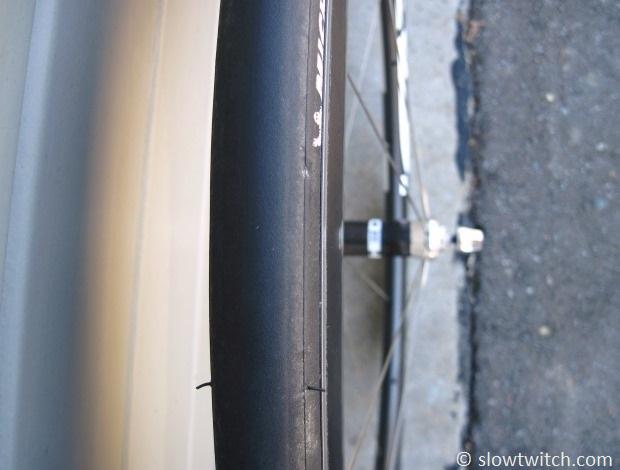
How narrow of a tire can you run? Hed’s minimum is 22mm. In fact, their aero tire of choice is the Continental Attack 22mm. Of course, it will end up much larger than that when inflated on the rim.
Aerodynamic Performance
I asked the folks at Hed about aero performance, and they were clear: These are a clear step up from the 23mm rims. Their results from the San Diego Low Speed Wind Tunnel were good enough to cause them to immediately make plans to discontinue the old 23’s.
Below you will find two graphs that detail their most recent runs at the San Diego LSWT.
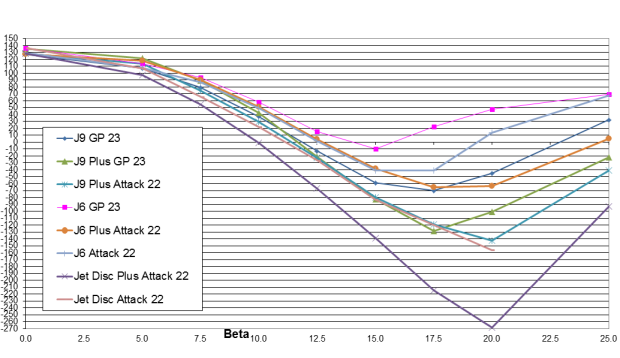
The graph below only shows three wheels to be easier to read:
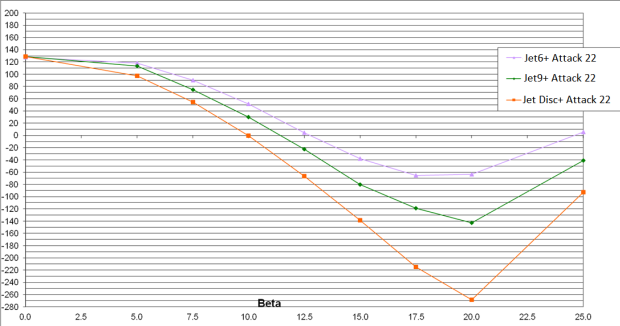
Rolling… What?
Hed is definitely in the camp that wider-is-better for… seemingly everything. In addition to aero performance, they advertise superior cornering grip, and improved ride quality – the latter not driven by the width directly, but the fact that it allows you to run lower pressure. The most interesting thing to me is that they’ve coined their own term called ‘roll speed’. We talk a lot about rolling resistance, which refers to the inherent ‘cost’ for your tire to roll along – how much energy the molecules of the tire soak up as they’re being deformed on the road surface.
Hed tells me that they are on board with rolling resistance, but that it does not paint a complete picture. Specifically, they say that tires serve as the bulk of your bike’s suspension system on a road bike. Lower tire pressure lowers the spring rate, and the idea is to put the rider’s energy in to forward motion, rather than up-and-down deflection on road imperfections. They say that reducing this deflection not only results in greater ride comfort, but also has a greater effect on rider speed than on-paper Crr by itself (which actually goes up slightly as tire pressures drop).
Is it true? Do I really know? Of course not. I’m a reporter, reporting on a stance of one company. Subjectively, I do like the wide tire/rim combo quite a bit. On a fair number of occasions in training, I have pulled away from other riders on particularly rough sections of pavement when I’m on 28mm tires at 70psi and they’re on 23’s at ~110. Would I have the same result with a fat tire on a skinny rim, instead of a fat tire on a fat rim? In other words – do I know if the speed benefit is due to the tire width by itself, or is the fat rim contributing to it? It’s hard to say – almost all of the wheels in my stable are at least 23mm wide.
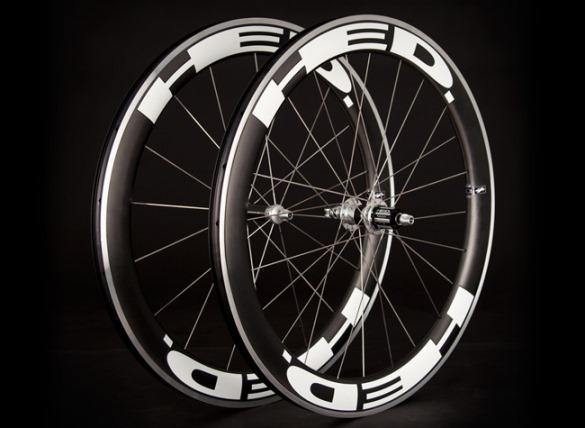
Overall Ride Impressions
How did it all flesh out? Does experience match the charts?
When racing on the Jet 6 and Disc rear combination, I must say that it was the most fun I’ve had on a race wheel set in a long, long time. Interestingly, it’s also the first time I’ve ridden a disc in a long time; and my first time ever riding this style of disc with a bulged rim and lenticular center. With so many spoked wheels coming out on the market, I’ve spent the bulk of the past two+ years riding those. When I get asked, ‘So, what are you racing on now?’, the answer is always, ‘Whatever I’m reviewing soon.’
The Jet Plus disc is an interesting animal. I initially had a noise occurring every revolution of the wheel; it was true and round, but just had a ‘tick’ sound. This turned out to be an improperly bonded disc skin that was covered as a warranty repair by Hed (it had to be sent back and re-glued). After getting that sorted out, it was as silent as advertised. And… it just felt fast. I was putting down speeds that I felt like my fitness didn’t buy. I couldn’t really explain it.
Why didn’t I go with the 90mm deep Jet 9 for a front? I’ve ridden a lot of wheels in my day, and it’s simple: I’m generally not a fan of using modern wide rims that are over 80mm in depth as a front wheel. It’s not that I can’t ride them, it’s that it makes the bike less enjoyable for me to ride compared to a modern ~60mm rim.
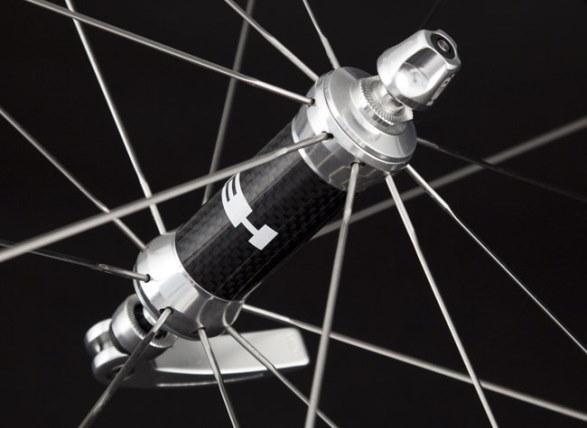
The thing that I’ve noticed is that modern wheels are getting more difficult to handle. They seem to get pushed around more, and this applies to several brands that I’ve ridden. Hed explained it like this: Wider rims allow more air to stay attached to the wheel for longer – especially when we’re talking clinchers (with which the tire width and shape are affected by rim width). That means more lift, or sail effect – and lower drag.
The consequence of this is increased side force from the wind – more pounds of pressure on your wheels that you must deal with as a rider, because the air is attached at wind angles closer to perpendicular (relative to your bike). Hed says that their Stability Control Technology (similar to Zipp’s Firecrest technology) reduces or eliminates steering input from side wind, meaning that it doesn’t turn your handlebars for you. That is not to be confused with side force – the lateral ‘push’ or ‘pull’ that you feel.
Indeed, the first time I jumped on a Firecrest 808, I was all gung-ho for a super easy handling wheel, because the talk from Zipp was all about stability. When I rode the wheel, I didn’t get it. The wheel didn’t feel any easier to handle than the old skinny aluminum-rim 808. In fact, it felt harder to handle. By Hed’s explanation, it makes sense… I thought that better stability meant less sideways push-and-pull, not less steering input. The increase in side force trumped the improved stability, at least as far as my overall liking of the wheel was concerned. I’ve noticed a similar effect on other wide-ID rims. My better half actually mentioned this to me completely independently, months before this review – she was having more trouble on windy descents with new wide rims.
This doesn’t make the new wheels bad in any way. They’re doing what they should, and performing in a way that old wheels didn’t. Just know what you’re signing up for. I think about it like this: Air is constantly flowing. Once it hits your wheel, it ‘catches’ (or attaches). If it pushes to the left a little bit harder for a second, it will take your wheel with it. If it pulls back to the right, your wheel goes with it again. The two are temporarily stuck together, similar to how water will stick to your finger if you put it in a slowly running faucet. Hed tells me that old rims simply didn’t work nearly as well as today; the air would break free and become turbulent. That shearing can have its own handling implications, but this editor still finds overall side force – driven by rim width and depth – to be the biggest factor in wheel handling.
Hed representatives also noted that tires play a huge part. Going from a ‘bad’ tire to their benchmark Attack 22mm on a Jet 6 Plus, they quoted a 10% increase in peak side force with the Attack due to the improved stall point.
Wrap Up
Are you as confused as I am by now? Let me cut through the mess.
These wheels are for you if you like going fast. These wheels are for you if you like aluminum braking surfaces. These wheels are for you if you like wide rims and tires. These wheels are NOT for you if you want the easiest-handling, lowest-side-force piece of pie out there (as long as you understand everything at stake in terms of aerodynamics and lift). I am just fine with the Jet 6 on front, just like I’m fine with a Zipp 404 Firecrest or Profile 58 or Enve 6.7. Some folks will be great with 80-90mm wheels, while others are best on a 30-50mm. While the deepest wheels look cool, I’m all about riding what is fastest when all things are considered – ability to drink in the aero position, for example. When in doubt, I suggest erring slightly shallow. If you can hang-on-to and control the bike with a super deep rim, you get extra speed. If you get nervous and let off the gas with every gust, you slow down.
From a pricing standpoint, Hed remains quite competitive in the high-end market. With many wheel sets in the $3,500+ range from Lightweight, Enve/Powertap, and Zipp, Hed is still clocking in at sub-$2k. In fact, you could buy this trio of wheels plus a few tire options and latex inner tubes for the price of one pair of uber carbon clinchers. They don’t hit the price point of Flo, but they also operate on a very different model of business, sales, and support. I’m excited to see the world of wide clinchers continue to expand – especially those with aluminum braking surfaces.


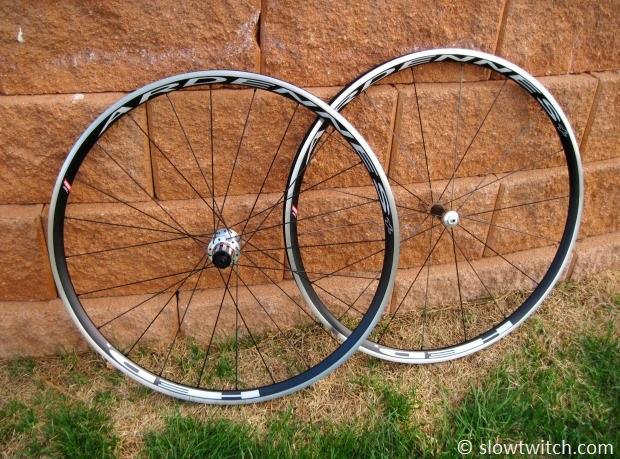
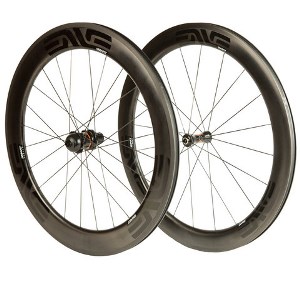
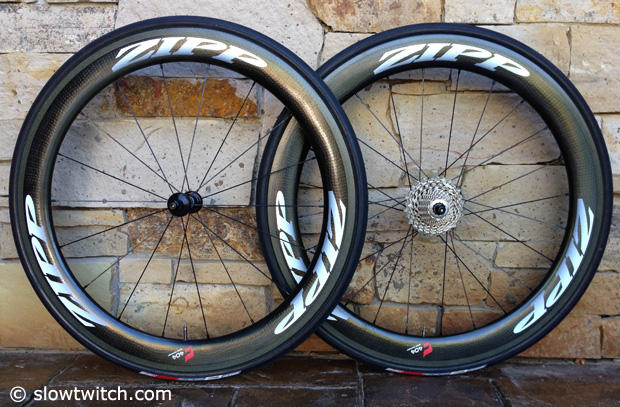
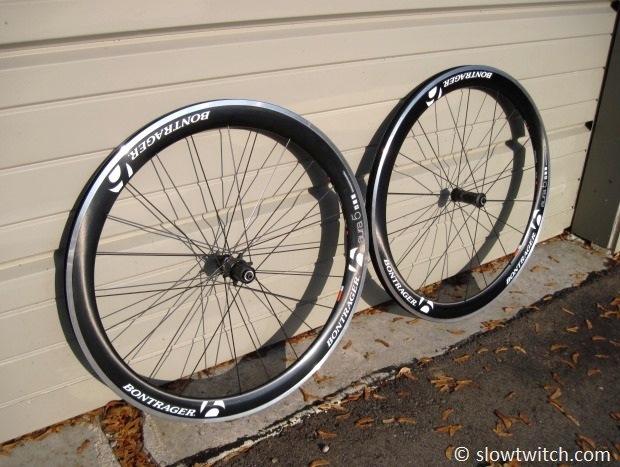
Start the discussion at forum.slowtwitch.com